Many women often encounter negative opinions from doctors regarding whether it is possible to sunbathe with uterine fibroids. Here you should know that not only the sun has a bad effect on a woman’s condition. Abortions, miscarriages, diseases of the appendages, removal of intrauterine devices, as well as any surgical procedures also accelerate the development and progression of this benign formation.
About thirty percent of patients suffer from fibroids. This pathology has a latent form and therefore often occurs without obvious symptoms. It can often be detected only during routine gynecological examinations, ultrasound examinations or colposcopy.

Is it possible to sunbathe if you have uterine fibroids or endometriosis?
According to doctors, absolutely any thermal processes can provoke the growth of fibroids. This means that you will have to abstain from them. Moreover, we should not forget that it is much easier to prevent diseases than to suffer all your life, spending time and a lot of money on their treatment. In no case should you take your health carelessly, especially when symptoms arise that indicate the presence of neoplasms.
FAQ

Immediately after receiving the mentioned diagnosis, many women begin to panic, fearing for the further possibility of pregnancy. In addition, sick patients ask the following questions:
- Do I need to avoid visiting beaches, solariums, saunas and swimming pools, as well as playing sports after surgical removal of uterine fibroids?
- What to do next if such a problem is diagnosed?
- What rules are important to follow in order to eliminate the pathology that has arisen and restore your previous health?
- What complications can arise if the detected fibroid develops against the background of mastopathy?
- Why will you have to change your current lifestyle from now on?
- How to prevent tumor growth with endometriosis?
- Is it possible to sunbathe in the sun with uterine fibroids?
Let's try to answer at least some of them. First of all, one should not despair, because at the moment a benign tumor can be treated absolutely successfully, even if it is significant in size. Its progression after mastopathy greatly worsens the well-being of patients, but eliminating it while preserving the function of childbearing is, of course, quite simple. But whether it is possible to sunbathe with uterine fibroids, we will tell you in detail below.
Causes and ways of tanning affecting tumors
Sunbathing in the open air on sunny days is strictly prohibited if you have fibroids. Patients with a similar diagnosis are allowed to stay on the beach only in the mornings or evenings, but only if they use a beach umbrella.
And don’t worry, in not very hot weather you will still get a tan, but it will lie more evenly on the skin and will not cause unpleasant burns.
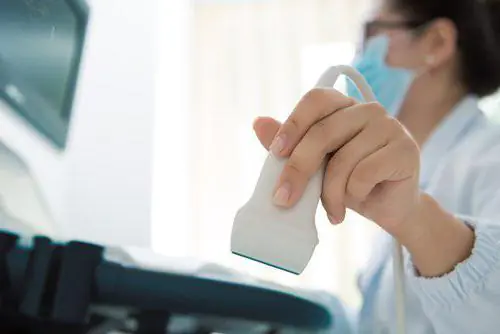
If the patient has to go outside during the day, it is advisable for her to wear light clothing that will cover her body. And while on the beach, it is very important to monitor your well-being without exposing your skin to sunlight. It is best to stay under an umbrella at all times and use sunscreen as often as possible. Is it possible to sunbathe with uterine fibroids without cream? Absolutely not.
Visiting baths, saunas, solariums, various thermal procedures, and, in addition, sunbathing after surgery to remove fibroids is permitted by doctors only after the completion of the recovery period of rehabilitation, which must be agreed upon with the appropriate specialist.
Possible problems
In situations of prolonged exposure to the sun, women with the described diagnosis are likely to have the following complications:
- seasickness, which is accompanied by a sharp increase in body temperature, fever or chills;
- uterine bleeding;
- endometriosis;
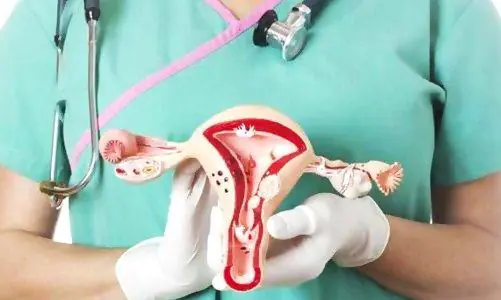
- inflammation of the ovaries;
- acceleration of tumor growth;
- the occurrence of any concomitant diseases in the field of gynecology;
- exacerbation of mastopathy, if any.
In all of the above situations, you should never sunbathe. Is it possible to sunbathe after removal of uterine fibroids? We discussed above.
Despite medical prohibitions, women cannot come to terms with the fact that tanning is strictly contraindicated for them with this diagnosis. This is due to the fact that patients do not have all the information regarding the harmful effects of intense sunlight on their body, especially on hormonal levels, immunity and the reproductive system.

Harm from ultraviolet radiation
Ultraviolet radiation not only has a negative effect on the female body, but at the same time provokes mastopathy, slowing down the regenerative processes of the skin, thereby causing its rapid aging; in addition, it significantly aggravates gynecological diseases and is one of the causes of oncology, especially adenocarcinoma, melanoma and leiosarcoma . It is these terrible consequences that explain doctors’ insistence on sunbathing for fibroids.
For women of reproductive age, it is especially important to monitor the condition of the tumor. In the case of such a diagnosis, you should definitely change your lifestyle and start adhering to the regimen recommended by your doctor, at the same time follow the course of prescribed therapy, and also, by eliminating the tumor, normalize your reproductive function. Is it possible to sunbathe after surgery? More on this later.
What consequences are possible due to sun exposure with fibroids?
Staying in the open sun under the influence of ultraviolet radiation is prohibited in certain cases:
- if a woman has not reached menopause and still has menstruation;
- if several tumors have been diagnosed in the uterus;
- The patient, in addition to fibroids, has obvious prerequisites for mastopathy;
- in case of pregnancy, which is complicated by fibroids;
- the tumor progressively increases in size.
It is precisely because of overheating of the lower abdomen and increased blood circulation in the pelvic area against this background that thermal procedures for fibroids are not allowed. And, in addition, hot baths and physiotherapy are strictly prohibited, because effects of this kind contribute to the rapid growth of the tumor. There are a large number of myths about fibroids, about their removal, and about the prohibitions associated with them. And on these issues it is better to consult your doctor.
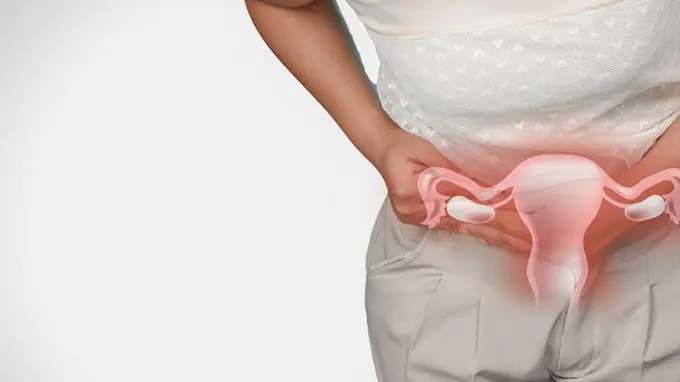
During menopause
With the approach of menopause, the development of fibroids, as a rule, stops, and the ban on visiting massages, beaches and saunas is canceled. Regular and systematic visits to the gynecologist make it possible to monitor the dynamics of the development of the tumor. After all, it happens that immediately after the patient returns from vacation, her tumor grows. That is why, in order to avoid worsening the disease, one must not refuse timely treatment and diagnosis.
As you can see, the question of whether it is possible to sunbathe with uterine fibroids in the sun has an almost clear answer - no. Although there is no direct evidence that tanning, sea holidays and thermal procedures provoke increased growth of tumors. However, doctors do not advise staying in the heat for a long time, since it has been found that prolonged exposure to sunlight, as well as heavy tanning, only provoke the risk of converting benign cells into malignant ones.
Tanning, however, like any thermal effect, contributes to the development and aggravation of tumors by increasing blood circulation in the pelvic area. Thus, in the presence of fibroids, its immediate increase in size is possible, and during the recovery period after removal of uterine fibroids, a relapse is likely.

Conclusion
But what to do when you so badly want to spend time at sea? First of all, it is important to follow all the instructions of your treating gynecologist, in particular, try to avoid exposure to the open sun. And after returning from vacation, you definitely need to visit it again, pass all the prescribed tests and undergo an ultrasound examination in order to assess your condition.
We hope we were able to answer whether it is possible to sunbathe with uterine fibroids.

A benign tumor of the uterus, according to medical statistics, is detected in 30% of women, mainly at the age of 35-40 years. Living with fibroids imposes certain restrictions, and first of all we are talking about various thermal procedures. Solarium, bathhouse, sauna, beach, trips to the sea in warm countries - all of this suddenly becomes unavailable. But is this really so and is such a tactic justified for diseases of the uterus?
Is it possible to sunbathe, visit a solarium, and enjoy other similar procedures if you have uterine fibroids? There is no clear opinion on this issue. Gynecologists are divided into two camps - those who allow everything for fibroids and those who prohibit any thermal procedures. To make a decision, you need to consider all the options, evaluate the possible risks and understand how heat actually affects the growth of uterine tumors.
Solarium: problems, risks and contraindications
Russian gynecologists are mostly of the opinion that visiting a solarium if you have uterine fibroids is categorically not recommended. It is believed that such thermal procedures stimulate blood flow to the lower abdomen and pelvic organs (uterus and appendages). Activation of blood flow stimulates the growth of myomatous nodes. After tanning, the once calm tumor suddenly begins to grow, and it is quite difficult to stop this process. For this reason, gynecologists usually do not advise their patients to go to the solarium and discourage them from other thermal procedures.
According to Russian doctors, if you have fibroids, it is also forbidden to take a steam bath, visit a sauna, or take hot baths.
If you ask the opinion of related specialists - dermatologists and cosmetologists, they will also not give a clear answer to this question. Most doctors do not advise getting carried away with solariums, and this is not only due to the potential growth of fibroids. Artificial tanning can also cause other health problems:
- Launching and accelerating the aging process of the body;
- Decreased skin turgor and elasticity;
- Intensive production of melanin, the pigment that provides tanning. This substance provokes the development of skin cancer (melanoma).

Melanoma occurs due to the increased development of pigment cells that produce melanin. Such processes actively occur during exposure to the sun.
There is an opinion that visiting a solarium leads to an exacerbation of many chronic diseases, and uterine fibroids are only one of them. It is not surprising that it has become clear in people’s minds: solariums and fibroids are incompatible. European gynecologists do not agree with this statement. According to foreign doctors, there is no reason to prohibit a woman from visiting a solarium, and there are explanations for this:
- The harm of ultraviolet radiation in relation to uterine fibroids has not been proven, so there is no point in giving up artificial tanning;
- Fibroids cannot develop into cancer or sarcoma. According to the latest data, sarcoma is an independent disease, and thermal procedures have no effect on its development;
- Increased blood flow in the pelvic organs is not the key reason for the growth of myomatous nodes. In the initial stages, the tumor is formed under the influence of sex hormones. Further, the fibroid acquires the ability to grow completely autonomously, and no external factors (including irradiation in a solarium) affect the development of the disease.
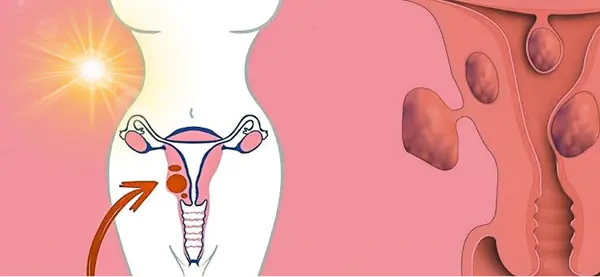
Once fibroids have appeared, no environmental factors can significantly influence the process of development of the pathology.
Who to believe and what to do? Reviews about thermal procedures are contradictory. Some women indicate that regular visits to the solarium had no effect on the growth of fibroids and did not lead to the development of complications. Others say that it was artificial tanning and ultraviolet irradiation that provoked the growth of the node and led to surgery. It is impossible to confirm or refute this data. There have been no conclusive studies on this topic, and women are still left to make their own choices at their own risk. Many women find it much easier to refuse a potentially dangerous procedure than to live in fear and constantly think about a growing uterine tumor.
If you decide to visit a solarium, you need to take the following precautions:
- Treat your skin with sunscreen before the procedure;
- Choose vertical booths - their thermal effect is minimal;
- Sunbathe for no more than 2-3 minutes and no more than one course per year;
- Monitor the well-being and growth of the myomatous node (undergo ultrasound examination every 6-12 months).
It is forbidden to visit the solarium if there is bleeding due to fibroids or the slightest suspicion of uterine sarcoma.
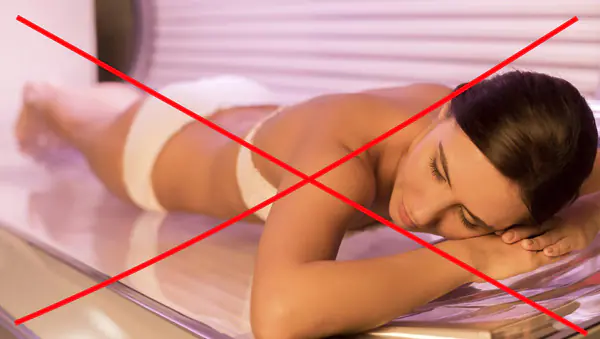
If a woman with fibroids has bleeding, then visiting a solarium is strictly prohibited.
Sun, air and water: is it possible to sunbathe on the beach?
All the arguments expressed against solariums are also relevant for natural tanning, but with some reservations. Unlike artificial ultraviolet rays, natural ones have different intensities at different times of the day. A woman who fears for her health can choose the optimal time to visit the beach.
- You should sunbathe on the beach during the period of minimal solar activity: before 11 am or after 16 pm. At this time, the sun is not so hot, which means that the likelihood of a negative effect on fibroids is minimized;
- The time spent under the sun should not exceed 30 minutes. It is best to alternate between resting in the shade and in the sun;
- Don't forget about sunscreen.

When being in the open sun, be sure to use sunscreen.
With regard to natural tanning, scientists also have not found any convincing evidence of harm. There is an opinion that the sun is less dangerous and outperforms a solarium, but this statement remains controversial. Both on the beach and in the solarium there is an intense thermal effect, which activates blood flow in the pelvic organs and can potentially cause the growth of a myomatous node. For this reason, Russian gynecologists say that you cannot sunbathe on the beach if you have fibroids. European colleagues do not agree with them here either, but women are encouraged to verify the accuracy of these statements through their own experience.
Other thermal procedures for uterine fibroids
Precautionary measures apply not only to the beach and solarium, but also to other similar entertainment. Living with fibroids, as well as endometriosis and other hyperplastic processes, involves a number of restrictions:
- It is not recommended to take hot baths or showers. You should swim in warm, pleasant water. The optimal water temperature is 37 degrees. Warm baths are allowed without time restrictions;
- You should not use a contrast shower, especially in the abdomen, buttocks, and lumbar region;
- You should not warm your feet, including using warm and hot foot baths or applying mustard plasters. It is not prohibited to wear woolen socks, but you should not overheat the body;
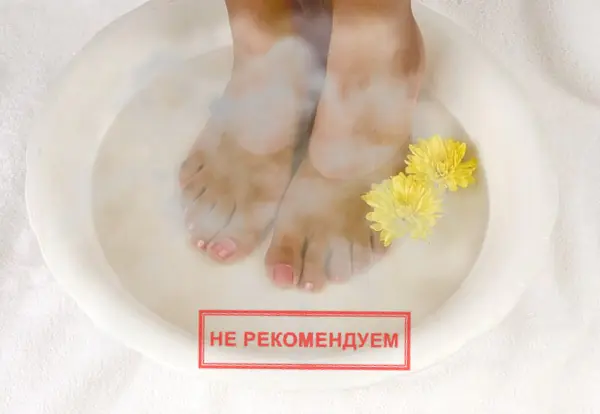
Hot foot baths are not recommended for women with uterine fibroids.
- You cannot bask in dry heat and carry out any health procedures of this kind in the projection of the uterus (lower abdomen, lumbar region - with large myomatous nodes). Impact on other parts of the body is permitted;
- It is not recommended to bask in a bathhouse or sauna;
- Swim in hot springs.
According to the generally accepted theory, all these procedures lead to increased blood flow in the pelvic cavity. There is an influx of blood in the vessels feeding the fibroid, and the tumor begins to grow. It is difficult to prove the harm of thermal procedures, but there are not many people willing to risk their health. If we recall the technique of uterine artery embolization (UAE), it becomes clear that changes in blood flow really affect tumor growth. With UAE, blood flow stops and the fibroid regresses. During thermal procedures, blood flow increases, which means that conditions are created for the proliferation of tumor cells.
If a woman decides to undergo any thermal procedure, she should be careful and know when to stop. If you feel unwell, it is better to refuse warming up.
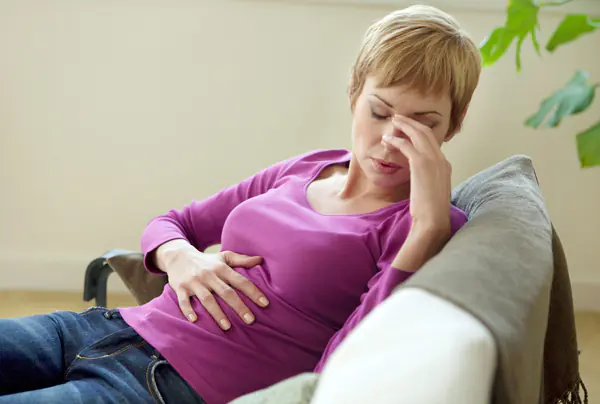
If a woman feels unwell, it is better to avoid thermal procedures.
Trips to the sea for uterine tumors
Is it possible to go to the sea with fibroids? No problems will arise if this is the Laptev or Barents Sea - it is unlikely that in such conditions a woman will sunbathe and spend a lot of time under the sun. But we are usually talking about warm seas. Travel to the south and seaside holidays are not prohibited, but caution should be exercised:
- Before traveling, be sure to visit a gynecologist and assess the condition of the fibroids, and if necessary, perform an ultrasound. If there is a tendency for the node to grow rapidly, you should refrain from traveling;
- To visit the beach, you should choose a time of moderate solar activity. You can’t sunbathe from 11 a.m. to 4 p.m.—during this period the sun is most aggressive. You can only visit the beach at sunset. In this case, it is unlikely that you will get a tan, but you will have the opportunity to calmly swim in warm water without risk to your health;
- If a woman wants to get a beautiful tan despite everything, she can allow herself to be in direct sunlight for some time, but no more than 1-2 hours a day. The rest of the time you should stay in the shade;
- When leaving the beach, you need to wear clothes that cover your entire body - this will minimize exposure to sunlight. You cannot overheat, so clothing should be light, breathable, and made from natural materials.
It is possible and necessary to relax at sea if you have fibroids, but upon returning home it will not be a bad idea to visit a doctor after 3-6 months. There is no point in immediately running to a gynecologist. Even if the fibroid begins to grow, it will not be possible to quickly track the changes. The rate of tumor growth can be assessed by performing a control ultrasound every 6-12 months.

If a woman with fibroids was on vacation at sea, then after 3-6 months an ultrasound should be done to monitor the condition of the fibroids.
Can a woman suffering from fibroids move to live in the south? Yes, but subject to all the above precautions. Living in warm countries does not require you to be on the beach from morning to night and sunbathe until you get black. You can organize your life in such a way that you are exposed to the sun only during the hours of its minimum activity - early in the morning or late in the evening. This approach will reduce the possible risks of thermal procedures to a minimum.
With fibroids, it is not the tan itself that is dangerous, but the exposure to heat. Ultraviolet rays provoke the development of skin cancer, but have no effect on a benign tumor of the uterus and do not lead to its degeneration into sarcoma.
Size matters?
There is an opinion that with small-sized fibroids, a woman can visit the beach, solarium, go to the sauna and take hot baths, while with large tumors, thermal procedures should be forgotten. Gynecologists do not agree with this statement and warn: no connection has been identified between the size of the node and the degree of possible risk. Exposure to heat can trigger the growth of any fibroid, and then a small tumor will become large, and a large tumor will become gigantic. On the contrary, thermal procedures may have no effect on the development of fibroids, and in this case its size is even less important.

Experts do not see a direct connection between the size of myomatous catches and thermal procedures.
The location of the node is also not a criterion. In a solarium, on the beach or in a hot bath, the effect is on the entire body, and it does not matter where the tumor is located - in the uterine cavity or outside it. The number of myomatous nodes is also not taken into account.
Factors that matter:
- Myoma growth rate. If the tumor is growing rapidly, there is no need to further provoke it;
- The likelihood of developing sarcoma. If there is a suspicion that a malignant tumor is hidden under the guise of fibroids, you should refrain from any thermal procedures;
- Uterine bleeding. If bloody discharge from the genital tract appears, you should not sunbathe. All thermal procedures increase bleeding. During menstruation, the beach and solarium are also prohibited;
- Development of complications requiring surgical intervention: torsion of the leg, birth of a submucosal node, infection of fibroids;
- Pregnancy due to fibroids or suspicion of it. While expecting a baby, thermal procedures can cause a miscarriage. During the same period, fibroids grow under the influence of progesterone, and it is not worth further provoking tissue proliferation;
- General condition of the woman. For some diseases, thermal procedures are prohibited, regardless of the presence of fibroids. Women who have entered menopause should be especially careful.
Before carrying out any procedure that involves warming up the body, you should consult a doctor and clarify possible contraindications. A responsible attitude towards your own health will help you avoid many problems and reduce the risk of dangerous complications.
Is it possible to sunbathe with uterine fibroids? Every woman who has been diagnosed with a benign tumor asks herself this question. Doctors note that this disease is very common in the field of gynecology, and occurs in approximately 30% of patients.
In most cases, the pathology in the early stages is asymptomatic, so girls do not have a dilemma as to whether it is possible to sunbathe with small uterine fibroids, because they may not even know about its existence. Pathology is often discovered by chance, during a routine examination by a gynecologist. As for the possibility of sunbathing, experts have different opinions on this matter, which are worth understanding.
Before deciding for yourself whether it is possible to go south with uterine fibroids, you should clearly understand what kind of disease it is. The tumor is localized between the muscular and connective layers of the reproductive organ and has a benign progression. With a thorough examination, the doctor can diagnose multiple or single formation of pathological nodes.
It is also necessary to understand that the neoplasm acts as a hormone-dependent tumor, therefore it can accelerate its growth, or, conversely, slow it down during pregnancy and menopause. Until recently, almost all gynecologists answered the question whether it is possible to go to the sea with uterine fibroids in the negative.
They justified this recommendation by the fact that sunlight is saturated with ultraviolet radiation, which has a negative effect not only on the immune system, but also on the reproductive system of a woman, and also provokes hormonal imbalance. The regeneration process of the skin slows down, and melanomas begin to form on their surface. If there is a lot of solar radiation, then the development of cancer cannot be ruled out.
Based on this, we can conclude that the tanning process itself does not in any way affect the vital activity of fibroids, however, with increased thermal exposure, blood circulation in the pelvic organs accelerates, which provokes the appearance or increase in the size of formations.
If, with a diagnosed benign tumor, the patient is exposed to sunlight for a long time, the patient may experience bleeding, gynecological diseases will begin to progress, endometriosis will worsen, and the ovaries may become inflamed. A certain part of modern doctors are confident that tanning does not affect myomatous nodes, so women are not prohibited from being in the sun or visiting a sauna or bathhouse, if these visits are not long in time.
Also, a woman should take care of her health on her own, and understand that if at least minimal restrictions exist, then there are specific justifications for this. Therefore, while tanning, it is recommended to cover the lower abdomen area. Representatives of the fair sex during menopause can forget about contraindications, since at this age fibroids stop growing, but regular monitoring by a gynecologist is necessary.
Contraindications
Many girls are interested in why they should not sunbathe if they have uterine fibroids. The leading specialist can answer as accurately and correctly as possible, since he clearly knows each clinical case and takes into account the individual characteristics of the patient’s body. Prolonged exposure to direct sunlight may be prohibited under the following circumstances:
- There are several tumor formations in the uterine cavity;
- The formations are marked by a rapid increase in size;
- A woman is carrying a child;
- Hormonal imbalances were diagnosed;
- There is a painful syndrome in the lower abdomen;
- There is bleeding from the uterus;
- Symptoms of mastopathy were identified.
If benign tumors are detected in women, experts prohibit them from visiting the solarium, since there is an increased level of ultraviolet radiation. Such conditions can cause fibroids to begin to grow in size.
If the patient still wants to have an artificial tan, then she is not recommended to go for procedures too often, the maximum stay in the capsule should not exceed three minutes, it is necessary to use protective creams, it is better to give preference to vertical booths.
After removal
Of course, a girl can independently decide whether to go to the sea if she has uterine fibroids. But you still need to listen to medical recommendations, especially if surgical removal of the tumor was performed. This treatment method is practiced if the size of the tumor is very large and it puts negative pressure on neighboring organs.
If the surgery was recently carried out, then it is better to postpone a trip to warm countries until the recovery period is completed. A woman should not visit a solarium, sauna or bathhouse, much less be exposed to direct sunlight. If you ignore these recommendations, there is a possibility that the tumor will become malignant.
The duration of the recovery period depends on various factors. On average, two months will be enough for complete rehabilitation. After this, the girl will be able to return to her normal lifestyle in full, including visiting the beach. Accordingly, when wondering whether it is possible to sunbathe with uterine fibroids, the answer may be positive, the main thing is to know the limit.
Rules
If you are planning a trip to the solarium, or a trip to the sea, first of all, a woman should visit her gynecologist. The doctor will definitely examine the patient and, if necessary, prescribe tests for her that will help make a prognosis for the development of the disease.
In certain situations, a specialist may prescribe medications that will protect the woman from a possible relapse of the pathology. However, if there have been cases of uterine bleeding within 6 months before the trip, then it is better to avoid sunbathing on the beach.
Under favorable circumstances, if the doctor has not prohibited travel to warm countries, you should follow certain rules while on vacation:
- It is better to give preference to regions with a not too hot climate and in your own time zone;
- If the air temperature is more than 25 degrees, it is better not to visit the beach;
- You should sunbathe between 10 a.m. and after 4 p.m.;
- Sunbathing is under a canopy or umbrella;
- There is no need to lie on your stomach on the hot sand;
- When visiting the beach, it is better to use a cream with a high level of protection against ultraviolet radiation, which must be applied every 2 hours;
- If the doctor has prescribed medications, you should not miss taking them;
- It is necessary to minimize exposure to the street during the daytime;
- To allow your skin to breathe, you should choose outfits made from light and natural fabrics in light shades, but it is advisable to keep it covered.
After the vacation is over and the woman returns home, she again needs to visit the gynecologist. The doctor should conduct an examination and make sure that the tumor has not begun to increase in size. If a specialist has diagnosed fibroids, you should not think that normal life is over. A woman can live as she did before, but she should adhere to some restrictions and not spend much time in the open sun.



